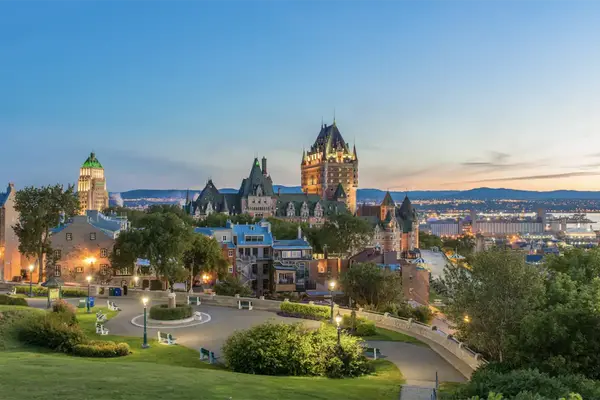How a 'unique summer' helped chart a brighter future for UK ports
 Tom Parry
Tom ParryThis summer’s domestic cruise season may have been born out of necessity, but few can question its success in ensuring a safe and successful return to service, while also widening the sector’s reach across the UK.
Ben Bouldin, Clia UK and Ireland chair, described the summer season to TTG last month as “one of the most significant things” the industry had done to grow its audience, with (despite the pandemic) more than 100,000 guests cruising since the May restart – a considerable number of whom were setting sail for the first time.
UK ports played a vital role, helping make the most of the industry’s unique schedule with 21 ships navigating the UK’s coastline during the summer’s peak.
“It’s been our busiest year, and from the awful situation Covid has caused, a real opportunity has been realised,” says Angie Redhead, head of city assets at Liverpool City Council. The city saw 110 calls this summer – the most since its dedicated cruise terminal opened in 2007.
“There’s no way certain lines would have considered Liverpool before this year,” she adds, crediting the expansion to lines’ “creative itinerary planning” and Liverpool’s role in the government’s Covid testing pilot scheme, which helped create a blueprint for helping follow stringent Covid protocols.
The positivity on Merseyside is shared on the south coast; Portsmouth “went from zero to 200% bookings overnight”, passenger operations manager Andrew Williamson recalls, with lines such as Viking Cruises and Virgin Voyages calling the city home. This, he says, led to a “record-breaking” year of around 90 calls.
Williamson says welcoming the “iconic” Virgin brand to Portsmouth was a highlight, one that was “amazing for us as a port and the whole city”. Scarlet Lady’s long-awaited debut season in August attracted more than 8,000 passengers and widespread national and international media coverage.
The power of a strong cruise brand was also felt in the north-east, with Disney Magic capturing the imagination of young and old as it returned to the Port of Tyne for the first time in three years.
As the port’s commercial director Kate O’Hara recalls, residents lined the quayside to wave the ship off after its 10 days in port with more than 12,000 passengers sailing. Disney Magic’s time on Tyneside was also a much-needed boon for travel agents, who heavily promoted the local departures.
“All our staff wore Mickey Mouse hands as we waved the ship off,” smiles O’Hara. “Travel agents welcomed such a strong brand to the region, and it was a great boost for us all.”
While 2021 calls were down two-thirds on 2019, O’Hara says the team was “just delighted” to support the industry in its restart – and has its sights set on 2022 to return to past heights.
The same can be said north of the border; chair of Cruise Scotland Rob Mason reports encouraging forward bookings, with current sales for Scottish departures around 2019 levels “and in some cases in excess of that”.
Mason adds that despite the Scottish government’s slower cruise restart compared with England, he believes ministers are “full of confidence” for the industry as it moves forward.
MAINTAINING MOMENTUM
After helping get the industry back on course, ports are now focusing on maintaining the momentum created this summer as the sector’s recovery continues.
Perhaps the most high-profile investment has come in the form of Port of Southampton’s new £55 million Horizon terminal, recently opened by maritime minister Robert Courts.
Rebekah Keeler, Southampton’s head of cruise, says Horizon “comfortably increases capacity” and will service “ships of the future, both in size and sustainability” as the port anticipates doubling its passenger numbers to four million per year over the next 30 years.
Back on Tyneside, a £600,000 expansion of Northumbrian Quay and a new DMC to promote the region to lines “puts us in a great position to grow for the future”, says O’Hara.
In Portsmouth, having used a quayside marquee known among its team as “T2” this summer, the port has plans to build its own dedicated cruise terminal by April 2023, able to accommodate up to 3,000 passengers on turnaround calls. Williamson is hopeful work on the project will start in January.
A berth extension, completed in 2020, has also allowed the port to accommodate ships like Scarlet Lady, as well as its largest-ever vessel – Royal Caribbean’s Majesty of the Seas – which called in July.
“That’s the next step for us,” says Williamson. “Two to three thousand-passenger ships is our target, and we’re aiming to attract more boutique vessels.”
Liverpool, meanwhile, has more than 100 calls confirmed for 2022 and plans to once again use the nearby ACC arena and convention centre as a satellite cruise terminal for next year. “We’re in a really strong position,” says Redhead.
Work on Liverpool’s own dedicated terminal, plans for which were first announced in 2016, have understandably needed to be adapted to suit the post-pandemic world.
The facility, capable of welcoming 3,500-guest vessels, should be ready within the next two years, Redhead insists, although she admits pragmatically the design “is already out of date” owing to new Covid protocols and changing consumer habits.

“We originally created a space with 40 check-in desks – all the indications are you won’t need an area like that,” she says.
“It’ll be a smooth ‘car-to-bar’ operation in less than 30 minutes and will have less human contact. We want to watch this space and see what the cruise recovery looks like. We want to make sure when we do press go, it’s a design that’s fit for the future.”
GREENER FUTURE
That future focus comes with sustainability at its core, with each port putting a strong emphasis on the environment. In Southampton, efforts range from placing 2,000 solar panels on Horizon’s roof, which on a typical day will create more energy than the building uses, to the terminal’s shore power “plug in” capabilities.
Tyne and Portsmouth ports are also looking to develop similar technologies, with the latter also exploring the use of battery power during quieter periods.
Both have made admirable pledges on emissions, with Portsmouth aiming to become the UK’s first net carbon-neutral port by 2030, while Redhead says Liverpool’s terminal development delays can actually play to its advantage.
“We’re looking to be as environmentally friendly as we can,” she explains. “We’ve now got this time to review, there will definitely be an evolution.”
That optimism is welcome after such an uncertain time; the way the industry has adapted this year bodes well for the innovation – and evolution – that is undoubtedly set to come.
Sign up for weekday travel news and analysis straight to your inbox

Tom Parry
Supplier Directory
Find contacts for 260+ travel suppliers. Type name, company or destination.















